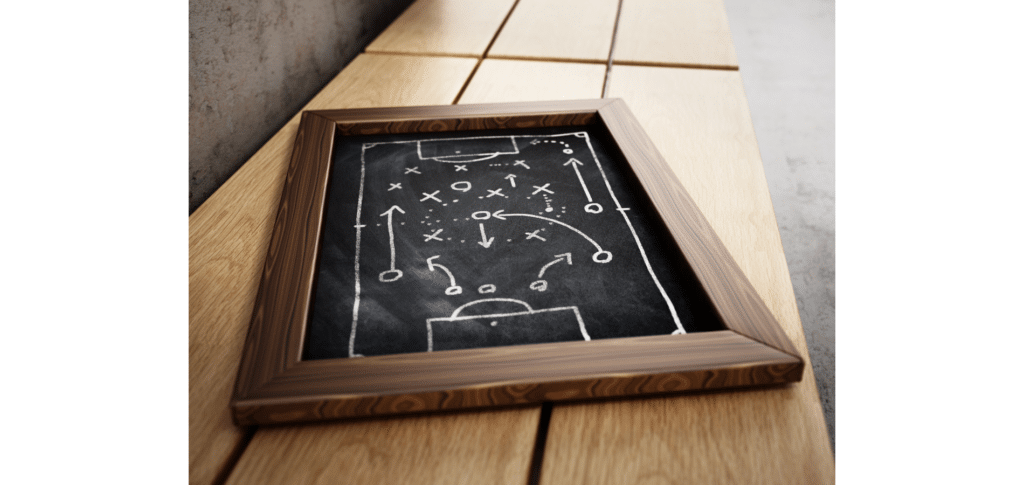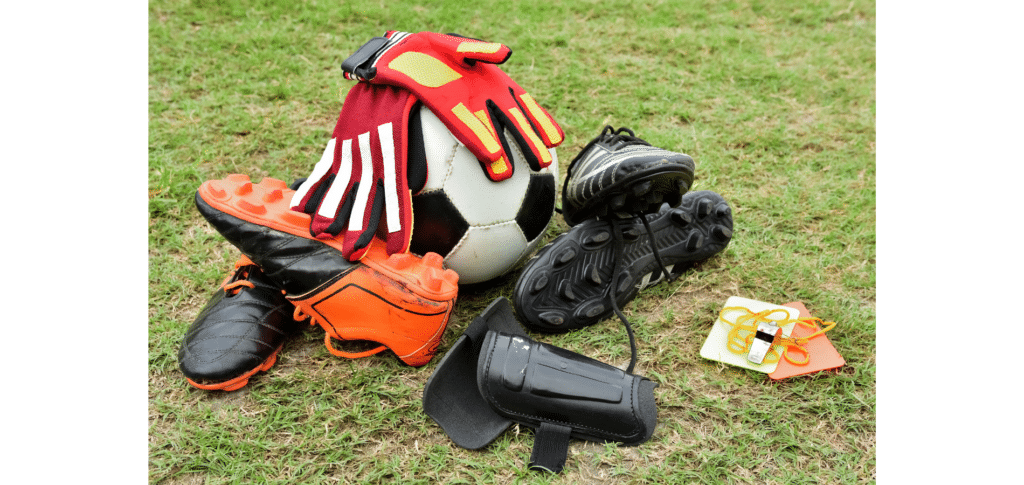Football is a game of two halves.
At the end of the first 45 minutes, the referee signals for the halftime break by blowing his whistle.
Players of both the home and away sides will then make their way towards the dressing rooms and commence their brief 15-minute period of recess.
I’ve provided a quick breakdown of what goes on in the changing rooms during the break.
But for readers who are after more detail, I’ll provide a more detailed timeline of events that illustrates the usual sequence of what goes on from the moment they step off the pitch to the time they make their way back onto it.
However, before I get into that, I just want to highlight the purpose and meaning of halftime in football.
What is the purpose of half time?
Now, a football match takes place over the course of 90 minutes.
If you look at that time duration in isolation, it’s quite a lengthy amount of time for athletes to perform at continuously.
So, the main purpose of halftime is to give the players a much-needed period of rest after they’ve been engaged in intense physical activity.
The game is split into two equal parts of 45 minutes on either side to allow for the break to occur in between.
However, the halftime break also affords television broadcasters the opportunity to create highlights of the events that have taken place within the first half as well as give an overall recap of key talking points from the opening half.
5 things players do at halftime
With that understanding of the meaning of halftime imparted, I will now dig deeper into the main things that soccer players do during the break.
1. Brief relaxation

A football game is usually a fierce battle between two teams from a physical, tactical and mental point of view.
Once the first half has concluded with the blow of the referee’s whistle, each set of players heads back to their team’s assigned dressing room.
And the first thing that players usually do once they set foot inside is to sit down and take a couple of minutes to catch their breath and recover.
This brief interlude is very important as it gives the player’s bodies a needed cool down, together with helping their muscles relax.
By taking a breather, athletes actually replenish their glycogen (energy) stores and allow for muscle fibre repair.
What’s even more interesting is that the recovery period is the time when the body adapts to the stress of physical exertion and this is when the gains from training and being active are realised.
However, it’s important to keep in mind that players don’t get to rest and relax for the entirety of the halftime break, as the match result has yet to be concluded.
After all, they still need to be adequately prepared for the upcoming second half from a tactical perspective.
2. Eating snacks to re-energise
All the running, tackling, jumping and jostling for the ball that occurs during a half of fast-paced football depletes the energy reserves of the players involved.
It’s therefore so vital that these reserves are sufficiently replenished during the half time break with small amounts of food and drink.
The snacks are usually prepared for the players by club kitchen staff so that they can be consumed as soon as the players arrive at the changing rooms.
Bananas are an excellent snack choice as they are a great source of potassium, complex carbohydrates and vitamin B6, all of which boost energy levels.
I also published a related article on what footballers drink, and isotonic sports drinks such as Gatorade were highlighted as a popular choice among these professionals.
3. Listen to tactical instructions

The 15-minute halftime interval is a convenient time for head coaches and managers to impart their tactical insights, as all the players have convened together in the dressing room.
Perhaps the most common tactical approach that managers use is to provide the players with an assessment of the way in which the opponents were playing within the first half.
They will usually highlight any positional vulnerabilities within the team, as well as analyse the specific attacking threats that the opposition have posed throughout the first half.
After the aforementioned information has been made known, managers usually provide their players with a coherent strategy that they can use to counter the gameplay of the opponent.
Furthermore, managers will also use this moment to try and motivate their players, as they are fully aware of the importance of the mental aspect of the game.
Also, particularly in cases where the manager’s team is winning by a tight margin, a message of avoiding complacency will be relayed to the players.
Take a look at this short clip of Pep Guardiola who manages to motivate his players as well as relay tactical instructions at the same time:
You can see how Pep placed an emphasis on using passing triangles to progress the play forward, together with highlighting how the team can get the ball to Kevin De Bruyne and David Silva in more advanced areas.
If you’re new to football or still learning about the game’s core concepts, you might want to check out our recommended books on football tactics.
4. Receive medical attention

Football is without doubt a contact sport.
So, from time to time, players experience injuries on the field that require further treatment.
The halftime break is an ideal moment to receive the necessary medical attention.
Physios and medical staff will be on hand within the dressing room to provide players with the care that they need so that they can be able to play the second half.
However, in some instances, a player could be receiving a medical assessment and the medical staff may deem it risky for the player to continue due to the likelihood of developing a serious injury.
In that case, the manager would be forced to substitute the injured player for a fully fit one.
5. Change their equipment

Lastly, players tend to freshen up during the half time break.
Clubs are required to carry an extra jersey for each player and a spare for emergency purposes, so players usually decide to wear a fresh shirt because the other one accumulated sweat and dirt during the first half.
In other cases, players may decide to swap out their shin guards for a new pair, particularly if one of the pads got damaged from a hefty tackle or on-field collision.
Final thoughts
So, in summary, what do soccer players do during halftime?
To begin with, they use the halftime break to physically and mentally recover from the draining excursions of the first half. With regard to the latter, some players are even known to listen to music in the dressing room, as it purportedly improves statistical performance.
Additionally, at halftime players listen to their manager and coaches for performance feedback and tactical instruction, as well as using that time to receive treatment for any knocks or bruises that they may have picked up on the field.
Halftime also gives them a chance to boost their energy levels with light snacks and drinks, and players do like to freshen up with a couple of changes in equipment like switching football boots, shin pads and jerseys.
If you enjoy the content that I create and would like to buy me a coffee, then I’d really appreciate it!
Any money that I earn through this donation will be re-invested into more content for this website.
Additionally, by sending in a donation you’ll also receive a copy of my recently released 190+ page eBook on Soccer Ball Care, as well as be subscribed to our mailing list where you’ll be regularly informed on the latest developments concerning the Soccer Whizz blog.
- Future Icons: Europe’s Emerging Midfield Maestros Set for Glory - December 4, 2023
- Kickstarting a Revolution: How Soccer Transformed the United States Over the Last Four Years - October 7, 2023
- 4-1-4-1 Soccer Formation [Analysis] - September 23, 2023

